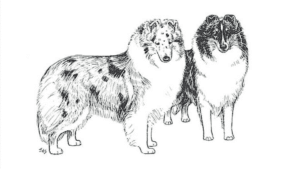
Judging the Shetland Sheepdog
Discover tips for judging Shetland Sheepdogs with clarity and confidence. Gain insights into breed standards, structure, movement, and more.

Home » Dog Breeds » Shetland Sheepdog Dog Breed
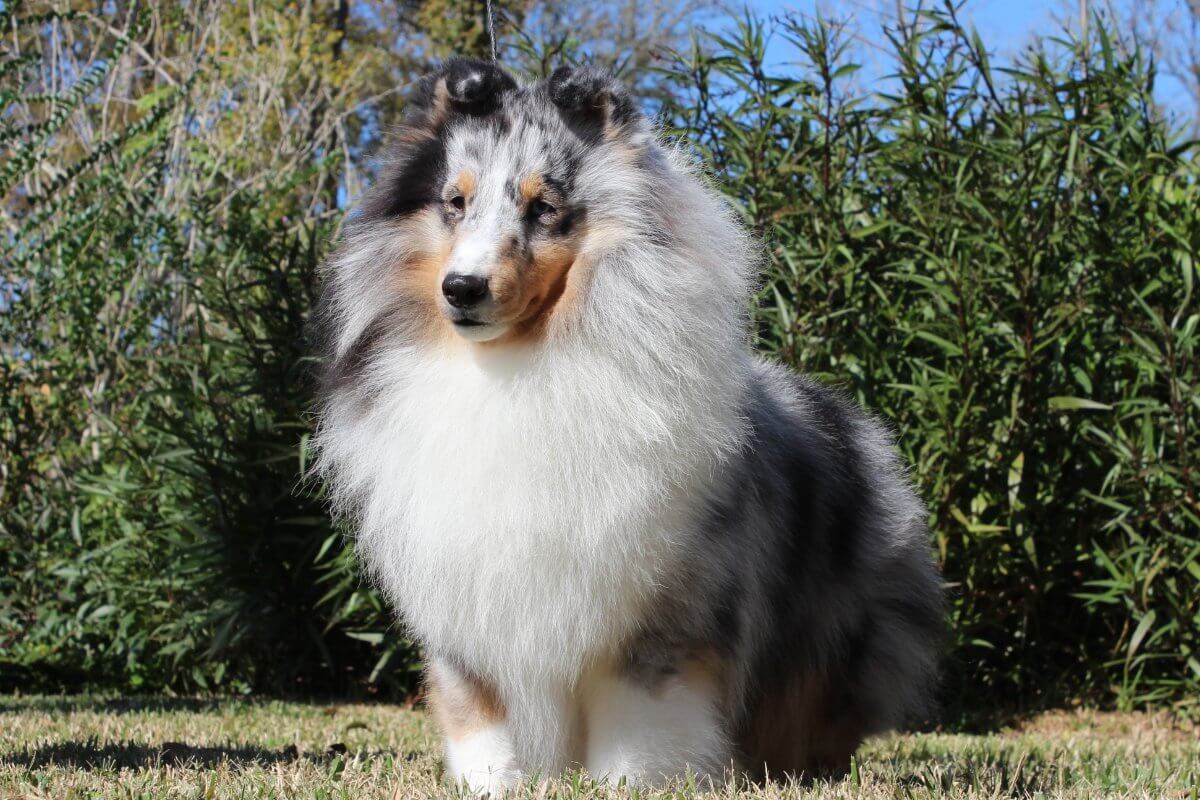
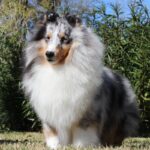
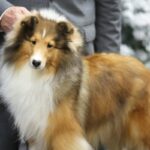
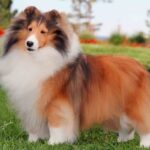
The Shetland Sheepdog, affectionately known as the Sheltie, is a small to medium-sized Herding breed known for its intelligence, agility, and loyal disposition. These dogs possess a striking resemblance to their larger cousin, the Rough Collie, but are distinct in both size and temperament. Shelties are highly trainable, excel in Obedience and Agility competitions, and are well-suited for active singles and families. They have a dense double coat, a mane and frill of hair around their neck, and a plume of hair on their tail, all of which contribute to the breed’s signature appearance and unmistakable style.
Herding
13 – 16 Inches
15 – 25 Pounds
12 – 14 Years
| Country of Origin | Scotland |
|---|---|
| Bred For | All-Around Farm Dog, Companionship |
| Known For | Alertness, Playfulness, Small Size |
| Popularity | High |
| Temperament | Affectionate, Loyal, Responsive |
| Activities | Herding, Running, Hiking, Therapy Dog, Conformation Shows, Dog Sports |
The Shetland Sheepdog has a history that is intertwined with the rugged and remote Shetland Islands of Scotland. Originating from these barren and windswept landscapes, the breed was primarily used for herding sheep, poultry, and ponies. Its ancestors include the Rough Collie, the Icelandic Sheepdog, and possibly, some small Scandinavian breeds. The resultant sheepdog was an intelligent, hardworking, and agile dog, capable of handling the challenging terrain and weather conditions of Scotland’s famous islands.
The breed’s journey to official recognition began in the early 20th century. In 1909, the first Shetland Sheepdogs were registered in England. However, those early Shelties were quite varied in appearance, and it took several decades of selective breeding to establish the consistency of type that is seen in the breed today. The American Kennel Club (AKC) recognized the Shetland Sheepdog in 1911, providing a significant boost to the breed’s popularity in the United States. The Royal Kennel Club (UK) also recognized the breed, further solidifying its status as a distinct purebred.
One of the notable characteristics of the Shetland Sheepdog is its resemblance to the Rough Collie. This is due to the influence of Rough Collies in the breed’s development, with some breeders aiming to “miniaturize” the Collie while retaining its herding abilities and general appearance. Despite their similarities, the Sheltie is most assuredly a separate breed, distinguished by its smaller size and unique personality traits.
The Shetland Sheepdog quickly gained popularity for its beauty, intelligence, and versatility. Today, the breed excels in various canine sports and extracurricular activities, showcasing its agility, obedience, and herding capabilities. Beyond the competition rings, Shelties are cherished as family companions, known for their loyalty, affection, and protective instincts.
The Shetland Sheepdog’s long history as a herding and working dog on the Shetland Islands has left a lasting legacy on its lively temperament and undeniable abilities. These intelligent and energetic dogs continue to thrive in active households, bringing joy and companionship to those who welcome them into their lives.
The adult Shetland Sheepdog typically stands between 13 and 16 inches tall at the shoulders. In terms of weight, a mature Shetland Sheepdog generally weighs between 15 and 25 pounds.
The Shetland Sheepdog is known for its well-balanced and symmetrical appearance. These dogs display a strong and agile physique, essential for their use as a herder and all-purpose farm dog. Their body length, from the chest to the buttocks, is slightly longer than their height at the shoulder, giving them a slightly elongated appearance despite the breed having a relatively short back. The Sheltie possesses sturdy bone yet is not not bulky, maintaining a refined and graceful look. The substance and proportion of the body contribute significantly to the breed’s agility and endurance, traits that are vital for dogs that compete in Herding Trials and other dog sports.
Texture: The Shetland Sheepdog’s double coat is a hallmark of the breed. The outer coat is long, straight, and harsh, and the undercoat is short and dense enough so that the entire coat has a “standoff” quality. The hair is smooth on the face, tips of the ears, and feet, and abundant on the mane and frill as well as on the tail.
| Standard Color | |
|---|---|
| Sable & White | ee |
| Black, White & Tan | ee |
| Blue Merle, White & Tan | ee |
| Blue Merle & White | ee |
| Black & White | ee |
| Sable Merle & White | ee |
| White Black & Tan | ee |
| White & Black | ee |
| White & Sable | ee |
| White | ee |
| White Blue Merle & Tan | ee |
| White Blue Merle | ee |
| White & Sable Merle | ee |
| Black & Tan | ee |
A Note About Color: The Shetland Sheepdog’s coloration may be either black, blue merle, or sable, with varying degrees of white and/or tan markings. Washed-out colors, faded blue and dilute tri-colors, rusty black coats, and coats with more than 50 percent white on the body are not desired. Brindle coats are unacceptable in the Sheltie.
The tail of the Shetland Sheepdog is set low and carried straight down or slightly curved when the dog is at rest, showcasing a graceful silhouette. The tail reaches to the hock joint, providing an ample canvas for the long, abundant hair that covers it. When the dog is alert or in motion, the tail may be lifted, but it is never carried over the back.
The Sheltie’s tail is never docked and its profuse coat adds to the overall impression of grandeur created by the mane and frill around the neck and chest. As on the body’s coat, the hair on the tail is harsh, straight, and stands out from the body, further enhancing the breed’s classic appearance.
Owning a Shetland Sheepdog introduces a blend of intelligence, enthusiasm, and devotion into a household. These dogs are known for their agility and energetic demeanor, necessitating owners who can accommodate their level of activity and engagement. Shelties possess a sharp intellect and are receptive to training, although they can also exhibit a resolute nature that demands consistent and authoritative handling.
The Shetland Sheepdog thrives when integrated into the daily happenings of the family, establishing strong bonds with their human partners. They are recognized for their loyalty and protective nature, making them excellent watchdogs for the home. Nonetheless, their protective instincts necessitate proper socialization from a young age to ensure their good behavior around strangers and other animals.
Lifespan: The Shetland Sheepdog is generally considered a healthy breed, boasting an average lifespan of 12 to 14 years.
However, like all breeds and mixed-breed dogs, they are susceptible to specific health conditions. Prospective caretakers should be mindful of these conditions and seek reputable breeders who perform necessary health clearances to qualify the health of their breeding stock.
Shetland Sheepdogs, sturdy as they are, may be prone to certain health conditions. Being aware of and proactive with these potential risks can aid caretakers in ensuring the well-being of their furry companions.
By maintaining regular veterinary check-ups, and providing a balanced diet and a safe living environment, caretakers can play a crucial role in mitigating these risks. Additionally, choosing a reputable breeder who tests their breeding dogs for common health conditions assures that puppies will be as healthy as possible when they arrive at their new homes.
A Shetland Sheepdog is a bundle of energy, intelligence, and affection. This active and intelligent reed is known for its playful and lively nature, making these dogs a delight to have around. However, their energetic demeanor also means they require adequate mental stimulation and exercise to prevent boredom and potential behavior issues.
Shelties are typically great with children, showcasing a gentle and patient temperament. Their innate herding instincts, however, can manifest as gentle nudging or herding behaviors, particularly around younger kids. Early socialization and training can help with managing these instincts and ensuring harmonious interactions.
When it comes to living with other dogs, Shelties generally get along well with their canine companions. Their friendly and sociable nature makes them good playmates, although proper introductions and socialization are key, as with any dog. Shelties can be reserved or even shy around strangers, a trait that makes them excellent watchdogs. Nevertheless, early and consistent socialization helps in building their confidence and ensuring they are well-adjusted and polite around new people and in new situations.
Shelties have a moderate to high sensitivity level. They are in tune with their environment and can pick up on changes in mood and atmosphere, making them responsive to their owners’ needs. However, this also means they can be prone to stress in chaotic or high-tension situations. Therefore, providing a stable and calm environment is crucial for their well-being.
The breed’s intelligence and eagerness to please make the Shetland Sheepdog a highly trainable companion. These dogs excel in Obedience Trials and are quick learners, but they also appreciate variety and mental challenges. Keeping training sessions engaging and positive provides the best results.
In terms of being alone, Shelties can adapt to spending some time by themselves, but they thrive when they’re a part of family activities. Long periods of solitude can lead to boredom and potential behavioral outbursts, so it’s crucial to provide adequate companionship and stimulation.
Proper nutrition is paramount when caring for a Shetland Sheepdog, ensuring the dog remains healthy, energetic, and thrives throughout its lifespan. And when it comes to feeding a Sheltie, it’s crucial to consider each dog’s age, size, activity level, and overall health.
Puppies have different nutritional requirements compared to adult dogs. For a Sheltie puppy, it’s recommended to provide high-quality puppy food, divided into three to four meals per day. This helps to support the pup’s rapid growth and development, ensuring it receives all the necessary nutrients.
As puppies transition into adulthood, Shelties typically do well on two meals per day. The amount of food required can vary based on age, activity level, and metabolism. An average adult Sheltie, weighing around 15-25 pounds, may require about 1 to 1.5 cups of dry dog food per day. However, this is a general guideline, and it’s important to monitor the dog’s weight and body condition, adjusting its food intake as necessary.
Shelties are generally not prone to obesity, but like all dogs, it’s important to keep an eye on their calorie consumption and weight. Treats should be given in moderation, and it’s best to remember that giving too many can contribute to obesity. Also, fresh water always needs to be available.
When it comes to the type of food that’s given, it’s advisable to choose a high-quality dog food that lists meat as the first ingredient, with no artificial colors, flavors, or preservatives. The food should meet the nutrient standards established by the American Feed Control Officials (AAFCO).
Consulting with the Shetland Sheepdog’s breeder or a veterinarian can offer personalized advice that suits a dog’s unique health requirements. This should all but guarantee it receives balanced nutrition. Regular veterinary check-ups are also vital for keeping track of a Sheltie’s weight and for determining if any dietary modifications should be made.
Training a Shetland Sheepdog is often a rewarding experience due to the breed’s high intelligence and eagerness to please. These traits make these dogs one of the more trainable canine partners, often excelling in Obedience, Agility, and other dog sports. However, the Sheltie’s intelligence also means it requires mental stimulation and variety in its training to prevent boredom.
Shelties have a moderate tendency to bark, which is a trait that can be managed with careful training and socialization. These dogs are vocal creatures and will alert to anything out of the ordinary, making them excellent watchdogs. Training a Sheltie to follow commands like “quiet” can be beneficial in managing the barking tendencies.
The Shetland Sheepdog’s intelligence and problem-solving skills mean these dogs will pick up commands quickly, but it also means they can get bored if not mentally stimulated. Providing a variety of training exercises, along with interactive toys and games, can help to keep their minds active and engaged.
While Shelties are not particularly known for having wanderlust, their herding instincts can sometimes kick in, leading them to chase after moving objects or running animals. This makes recall training particularly important, guaranteeing that they return to when called, regardless of the distraction.
Overall, Shetland Sheepdogs respond best to positive reinforcement training methods. They are sensitive dogs and do not respond well to harsh corrections or training methods. Using treats, praise, and play as rewards for good behavior helps to build a strong bond and all but guarantees that each training session will be successful.
The Shetland Sheepdog is a breed bustling with energy, intelligence, and a playful spirit, necessitating ample exercise to keep the dog healthy and content. The breed’s herding lineage means it has high levels of stamina and can engage in activities for extended periods without tiring easily.
| Energy Level | Moderate to High |
|---|---|
| Exercise Requirements | 1 Hour/Day (Minimum), Daily Walks, Vigorous Running, Regular Exercise, Playing with Another Dog, Mental Stimulation |
In terms of its exercise needs, Shelties require a considerable amount of physical activity each day. A combination of walks, play sessions, and mental stimulation activities works best to keep these dogs in optimal condition. Engaging them in activities like fetch, agility training, or even herding exercises can help to burn off their energy and satisfy their instinctual needs.
This breed’s energy level is significantly high, making these dogs well-suited for active families or individuals who enjoy outdoor activities. Shelties love to be involved in family activities and will gladly join in on hikes, runs, or any adventurous outing.
The intensity of the Sheltie’s play and work ethic is notable, reflecting the breed’s herding background. These dogs approach activities with enthusiasm and dedication, always ready to participate and give their best. This intensity, however, also means they require downtime to prevent overexertion.
Playfulness is another characteristic trait of the Shetland Sheepdog. These dogs enjoy interactive games and toys, which also serve as excellent outlets for their mental energy. Puzzle toys, treat-dispensing games, and hide-and-seek activities are great options to keep their minds sharp and engaged.
Despite its high energy and exercise requirements, the Shetland Sheepdog can adapt to various living situations, including apartment living, as long as its exercise needs are met. Making sure that the Sheltie has sufficient outlets for its boundless energy helps in preventing behavioral issues and keeps the dog happy and healthy.
Grooming a Shetland Sheepdog is a commitment that comes along with owning this beautiful and luxuriously coated breed. The Sheltie’s double coat consists of a long, straight, and harsh outer coat with a dense, soft undercoat. This combination requires regular attention to keep it in top condition.
| Coat Type | Long, Straight, Harsh, Dense |
|---|---|
| Grooming Requirements | Daily Brushing, Occasional Bathing, Routine Ear Cleaning, Periodic Nail Trimming, Regular Tooth Brushing |
When it comes to ease of grooming, Shetland Sheepdogs fall into the category of breeds that require a significant amount of grooming. The breed’s thick coat is prone to mats and tangles, especially in the areas around the neck, behind the ears, and at the base of the tail. Regular brushing sessions, at least a couple times a week, are essential to remove any debris and to prevent the coat from becoming damaged by neglect.
The amount of shedding can be substantial, particularly during the changing of the seasons when Shelties “blow” their undercoat. During these periods, daily brushing is usually necessary to manage the shedding and to help accelerate the process. It’s also beneficial for distributing the natural oils throughout the coat and to promote a healthy shine.
Grooming sessions provide an excellent opportunity to check the Sheltie’s skin for any signs of irritation, pests, or abnormalities. Paying attention to the ears, teeth, and nails during these sessions guarantees that these areas are kept clean and healthy.
While Shetland Sheepdogs do require a fair amount of grooming, their owners often find grooming sessions to be an enjoyable bonding experience. The Sheltie’s typically gentle and patient temperament usually means the dog is willing to stand still and enjoy the time spent together.
Living with a Shetland Sheepdog can be a delightful experience, thanks to the breed’s intelligence, loyalty, and affectionate nature. However, it’s crucial to consider all of the dog’s characteristics and needs to ensure a harmony in the home.
Shelties are adaptable and can thrive in various living environments, including apartments, as long as their exercise needs are met. They are an active breed, requiring regular physical and mental stimulation to stay happy and healthy. Making sure they have enough space to play and can access stimulating toys makes apartment living more comfortable for them.
When it comes to weather adaptability, Shelties have a thick double coat that provides them with good insulation, making them quite resilient in cold weather. However, it is essential to provide them with a warm shelter and limit their exposure to extreme cold. During hotter weather, their thick coat can make them prone to overheating. Providing access to shade, fresh water, and a cool place to rest is crucial, and avoiding strenuous exercise during the hottest parts of the day is essential.
The Shetland Sheepdog tends to be vocal, and this characteristic can be more pronounced in apartment settings or in close living quarters. Training the Sheltie to respond to commands to stop barking, and providing adequate mental stimulation, can help to manage any tendency to vocalize. It’s crucial for potential owners who live in apartments or condos to consider their ability to manage the breed’s signature “voice.”
A litter of Shetland Sheepdog puppies provides an exciting and rewarding experience for their breeder. Those energetic and intelligent pups quickly become a cherished part of the family, forming strong bonds with their mother and siblings. Sheltie pups are known for their playful nature and eagerness to learn, so the puppy phase an important time for socialization and training.
When a Shetland Sheepdog puppy arrives in its new home, the commitment to providing it with the care and attention it needs to grow begins. It starts with creating a safe and nurturing environment in which the pup can thrive. Making sure the home is puppy-proofed, with any potential hazards out of reach, is a critical first step.
Feeding the Sheltie puppy a balanced and nutritious diet is crucial for its growth and development. It may be necessary to consult with the pup’s breeder or with a veterinarian to find a high-quality puppy food and to determine the best feeding guidelines.
Socialization is a vital part of a Shetland Sheepdog puppy’s development. Exposing the pup to a variety of people, places, and experiences in a positive and controlled manner is essential in the early months. This helps to ensure the pup will grow up to become a well-rounded and confident adult.
Training should start early, utilizing positive reinforcement techniques to teach the puppy basic commands and manners. The Sheltie pup is intelligent and eager to please, making it highly trainable from the jump. Consistency and patience are key during the training process.
Regular veterinary check-ups are essential to monitor the puppy’s health and development. It is important to make sure it receives all the necessary vaccinations as well as the preventive care needed to protect it from parasites and common puppyhood illnesses.
Grooming is another important aspect of caring for a Shetland Sheepdog puppy. Grooming sessions should start early, getting the little one accustomed to being brushed and handled. This not only helps to keep its coat in top condition, it also strengthens the bond between the puppy and its groomer.
The Shetland Sheepdog is a breed that thrives when engaged in a wide variety of activities. The Sheltie’s intelligence, agility, and eagerness to please make these dogs excellent candidates for various Companion and Performance events. Here’s a list of dog sports that are suitable for almost any Sheltie:
Participating in these and other activities not only helps to burn off the Shetland Sheepdog’s excess energy, it also strengthens the bond between the dog and its human companion, creating fulfilling and enriching memories for both.
The Shetland Sheepdog is recognized by the world’s leading registries and kennel organizations, which categorize the breed into a specific Group based on its unique characteristics. This breed is recognized worldwide under the following Group designations:
| Organization | Group Designation |
|---|---|
| AKC (American Kennel Club) | Herding |
| UKC (United Kennel Club) | Herding Dog |
| CKC (Canadian Kennel Club) | Herding |
| ANKC (Australian National Kennel Council) | Working Dogs |
| RKC (The Royal Kennel Club) | Pastoral |
| FCI (Fédération Cynologique Internationale) | Group 1: Sheepdogs and Cattledogs; Section 1: Sheepdog |
The ideal Shetland Sheepdog is described by a Breed Standard that is approved by each of the world’s leading registries and kennel organizations. The Breed Standards for this breed may be found in the following links:
| Organization | Breed Standard |
|---|---|
| American Kennel Club | AKC Shetland Sheepdog Breed Standard |
| United Kennel Club | UKC Shetland Sheepdog Breed Standard |
| Canadian Kennel Club | CKC Shetland Sheepdog Breed Standard |
| Australian National Kennel Council | ANKC Shetland Sheepdog Breed Standard |
| The Royal Kennel Club | RKC Shetland Sheepdog Breed Standard |
| Fédération Cynologique Internationale | FCI Shetland Sheepdog Breed Standard |
Shetland Sheepdogs, with their intelligence and agility, have garnered a supportive community represented by various breed clubs and kennel organizations around the globe. These groups not only celebrate the breed, they also provide essential resources for both prospective and current supporters of the breed.
In the United States, the American Shetland Sheepdog Association (ASSA), founded in 1929, stands as the nation’s central hub for Sheltie enthusiasts. ASSA is dedicated to promoting the responsible breeding and ownership of Shetland Sheepdogs. The association organizes numerous events, provides educational materials, and supports rescue efforts for Shelties in need.
In Canada, the Canadian Shetland Sheepdog Association (CSSA) fosters a thriving community for Sheltie lovers. This organization provides a platform for breeders and owners to connect, share experiences, and celebrate the breed together.
In the UK, The English Shetland Sheepdog Club, founded in 1914, serves as the cornerstone for Sheltie enthusiasts in the United Kingdom. This club upholds the breed’s written Standard, hosts events, and offers guidance for Sheltie ownership throughout Great Britain, contributing significantly to the breed’s popularity in the UK.
These national clubs, alongside numerous regional breed clubs, play an indispensable role in supporting the interests of Shetland Sheepdog owners and breeders. Their efforts ensure the welfare of the breed, promote responsible breeding practices, and provide a community for those who are passionate about Shelties.
Several groups exist that are dedicated to rescue efforts for Shetland Sheepdogs in need. These volunteer organizations are vital for providing many Shelties with a second lease on life.
In the United States, the American Shetland Sheepdog Association (ASSA) plays a significant role in assisting with rescue operations. ASSA collaborates with volunteers to help relocate, rehabilitate, and rehome any Sheltie in need of assistance.
Similarly, in Canada, the Canadian Shetland Sheepdog Association (CSSA) is actively involved in supporting rescue efforts for the breed. CSSA aids in connecting Shelties with new families and making sure they receive the care and attention they need during the transition.
In the United Kingdom, a network of groups that include The English Shetland Sheepdog Club assist in breed rescue activities, providing a safety net of support for Shelties searching for a new home.
In addition to breed-specific assistance there are general animal rescues and local shelters that might occasionally have a Shetland Sheepdog available for adoption. These organizations can also play a role in the rescue and rehoming of Shelties, offering an alternative avenue for prospective adopters.
Shetland Sheepdogs possess a thick double coat that sheds year-round, with increased shedding during seasonal changes, particularly in spring and fall. Regular grooming, including brushing several times a week, can help to manage the shedding and prevent matting. Owners of this breed should be prepared for the commitment required to groom the dog and manage hair in the home.
Shetland Sheepdogs typically enjoy a long lifespan, with many living between 12 and 14 years, and some even reaching up to 16 years with proper care. Their longevity can be attributed to their generally robust health and active lifestyle. However, like all dogs, they can be prone to specific health conditions, so regular veterinary check-ups are essential to catch and address potential issues early on.
Shetland Sheepdogs are known for their affectionate nature and loyalty to their families, making them excellent companions. They are particularly good with children, although interactions should always be supervised, especially with younger kids. The breed’s intelligence and eagerness to please make the Sheltie responsive to commands, contributing to a harmonious household environment.
While Shetland Sheepdogs are intelligent and generally responsive to training, their sensitivity and need for engagement can present challenges for first-time dog owners. These dogs thrive in environments where they receive consistent training, regular exercise, and plenty of interaction. Prospective owners should be prepared to invest time into training and socialization, and providing mental stimulation to keep a dog happy and well-behaved.
Shetland Sheepdogs are classified as a small to medium-sized breed. Adult Shelties typically stand between 13 and 16 inches tall at the shoulder. In terms of weight, a mature adult generally falls within the range of 15 and 25 pounds. Their compact size makes them suitable for various living situations, but it’s important to remember that they are an active breed that requires regular exercise.
Shetland Sheepdogs are not typically known for aggression, but they can be reserved or aloof with strangers, a trait stemming from their watchdog instincts. Proper socialization from a young age is crucial to help them develop into well-adjusted adults. They are generally gentle and good-natured, making aggression a rare issue for a dog tat has been properly trained and socialized.
Known for their intelligence and eagerness to please, Shetland Sheepdogs are generally considered easy to train. They respond well to positive reinforcement techniques, such as treats and praise, and they enjoy engaging in training activities. However, their sensitivity means they do not respond well to harsh training methods, so a gentle and patient approach is key.
With proper introduction and socialization, a Shetland Sheepdog can get along well with cats and other pets in the household. The breed’s herding instincts may sometimes come into play, leading a Sheltie to try and herd a cat, but this behavior can usually be managed with training. It’s important to supervise initial interactions between a Sheltie and a cat to encourage the development of a positive interspecies relationship.
Shetland Sheepdogs are not considered hypoallergenic, as they have a thick double coat that sheds regularly. People with allergies to pet dander may find that a Sheltie triggers their symptoms. For those with pet allergies, it might be worthwhile to spend time around the breed before making the decision to bring a Shetland Sheepdog into the home.
Shetland Sheepdogs are highly intelligent, ranking high in terms of trainability and problem-solving ability. This intelligence means they require mental stimulation to prevent boredom, which often leads to undesirable behaviors. Providing interactive toys, engaging in training exercises, and participating in dog sports can help to keep a Sheltie’s mind active and engaged.
Shetland Sheepdogs are known for being vocal, and they have a tendency to bark in response to stimuli in their environment. This trait makes them excellent watchdogs, as they will alert their human companions to anything unusual. However, with proper training and socialization, excessive barking can be managed so that it only occurs when necessary.

Discover tips for judging Shetland Sheepdogs with clarity and confidence. Gain insights into breed standards, structure, movement, and more.
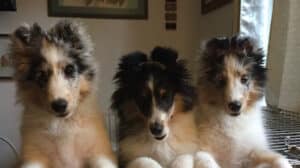
Discover the qualities of Shelties. Learn about their features, temperament, and breed standards. A delightful read for Sheltie enthusiasts!
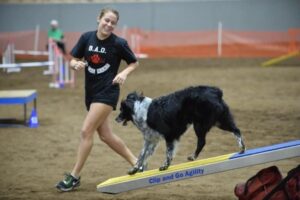
Viveka Rosenberger, an AKC Agility League competitor, talks about how she got started in the sport of Agility, her Agility partner, and more!
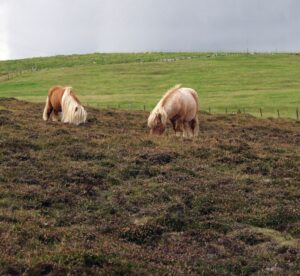
In Search of the Last Shetland Sheepdog Breeders | An Adventurous Quest for the Origins of the SheltieAfter a journey to the Faroe Islands

Dan Sayers is the Editor-in-Chief of SHOWSIGHT digital and print publications. He received a B.S. from Drexel University where he studied interior architectural design. His professional career has allowed him to develop his planning, problem-solving, and project management skills, which were employed in the office, educational, and financial sectors. While working as a project manager, he earned a Graphic Design Certificate from the University of the Arts and began creating ads for many of America’s top-winning show dogs. Through this work, Dan became Editor-in-Chief of the nation’s first online-only dog show publication. His current role expands on this experience and broadly extends to cover the sport of dogs in Companion and Performance events as well as all aspects of Conformation.
Dan is a long-time member of the Irish Water Spaniel Club of America and is the organization’s current AKC Delegate and Archivist/Historian, as well as a club-approved Breed Mentor. From 2000-2010, he was the club’s AKC Gazette Columnist. He breeds Irish Water Spaniels under the Quiet Storm prefix and has judged the IWSCA National Specialty Sweepstakes twice. Dan is a member of the Morris and Essex Kennel Club as well as the Dog Writers Association of America, which recognized his illustrations in the award-winning canine compendium, the Encyclopedia of K-9 Terminology.
The best way to ensure a long and happy relationship with a purebred dog is to purchase one from a responsible breeder. Not sure where to begin?
Contact the National Parent Club’s Breeder Referral Program, which is listed on the AKC Breeder Referral Contacts page.
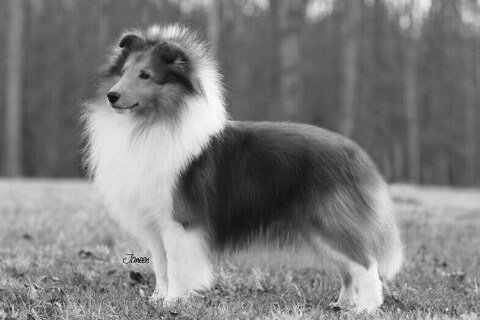

"*" indicates required fields
Showsight Magazine–the world’s most influential purebred dog publication since 1992. Each issue reaches a global audience dedicated to preserving the history and health of purpose bred dogs. Filled with award-winning editorial focused on news and insights from the dog show community, top breeders, handlers, AKC Judges, and more!